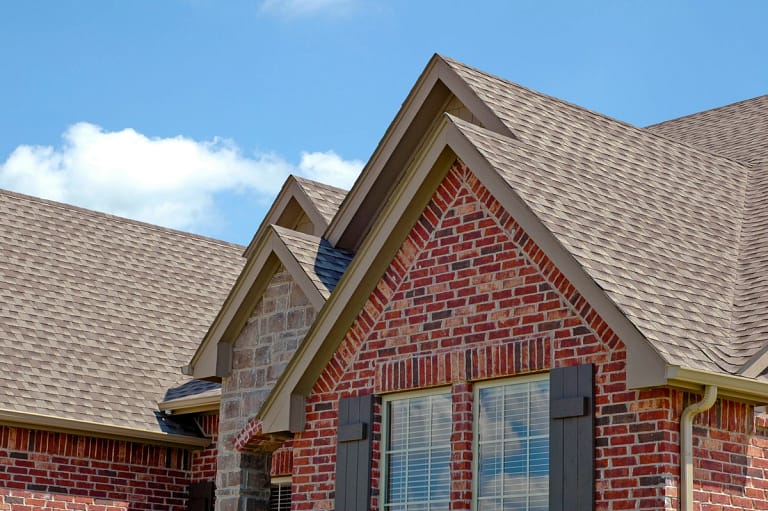A roof replacement is a significant investment for any homeowner. All homeowners will have to deal with a roof replacement at some point, whether you’re:
- Facing a sudden storm-related emergency
- Dealing with an aging roof
- Looking to upgrade to a more durable roofing material
One common concern is how to finance a huge project like a roof replacement. Roof replacements can be expensive, but with the right financial strategy, you can protect your home and your budget.
In this guide, we’ll explore everything you need to know about roof replacement financing! Keep reading to learn more.
What Is Financing?

Financing, in simple terms, refers to the act of borrowing money to cover the cost of a specific expense, such as a roof replacement. It allows you to spread the expense over time, making it more manageable. Financing can be a valuable tool for homeowners who don’t have the funds readily available to cover a major home improvement project like a roof replacement.
8 Types of Financing for Roof Replacement
When it comes to financing your roof replacement, there are several options available, each with its advantages and disadvantages. Here are some common types of financing to consider:
1. Personal Savings:
Using your personal savings is the most straightforward way to pay for a roof replacement. If you have enough money saved up, this option can save you from incurring interest or fees associated with loans. However, it may deplete your emergency fund or savings earmarked for other goals.
2. Home Equity Loans:
A home equity loan allows you to borrow against the equity in your home. This type of loan typically has a fixed interest rate and a longer repayment period. Home equity loans can be a cost-effective option, but they put your home at risk if you fail to make payments.
3. Home Equity Line of Credit (HELOC):
A HELOC is another option that taps into your home’s equity. Unlike a home equity loan, a HELOC operates like a credit card, with a variable interest rate and a revolving credit line. It offers flexibility but can be risky if interest rates rise.
4. Roofing Contractor Financing:
Many roofing companies offer financing options to their customers. These may include partnerships with lending institutions or in-house financing programs. These can be convenient, but it’s essential to carefully review the terms and interest rates to ensure they’re competitive.
5. Personal Loans:
Personal loans are unsecured loans that don’t require collateral. They can be obtained from banks, credit unions, or online lenders. Personal loans have fixed interest rates and set repayment terms, making them predictable and accessible to many homeowners.
6. Credit Cards:
Credit cards are a readily available source of financing, but they often come with high interest rates. They can be useful for smaller roofing projects, but for more extensive replacements, the interest charges can add up quickly if not paid off promptly.
7. Federal Housing Administration (FHA) Title I Loan:
The FHA Title I loan is a government-backed program designed for home improvements. It doesn’t require equity in your home, but the loan amount is limited. Interest rates may be higher than some other financing options.
8. Energy-Efficiency Loans and Rebates:
If you’re considering upgrading your roof with energy-efficient materials, there are specific financing options available, including loans and rebates designed to encourage eco-friendly home improvements. Check with your local utility companies and government agencies for potential programs.
How to Apply for Financing

Once you’ve decided on the type of financing that suits your needs, it’s time to apply. Here are the general steps to follow:
1. Research Lenders
Start by researching lenders that offer the type of financing you’re interested in. Compare interest rates, terms, fees, and eligibility requirements to find the best fit.
2. Gather Necessary Documents
Lenders will typically require documentation such as proof of income, credit history, and information about your home. Prepare these documents in advance to streamline the application process.
3. Complete the Application
Fill out the application form provided by the lender. Be honest and accurate in your responses. You may need to provide information about your roofing project, including estimates from contractors.
4. Wait for Approval
The approval process varies depending on the type of financing. For personal loans and credit cards, you may receive a decision within days. Home equity loans and HELOCs may take longer due to the appraisal process. Be patient and be prepared to provide any additional information requested by the lender.
5. Review and Sign the Loan Agreement
Once approved, carefully review the loan agreement. Pay attention to interest rates, fees, and the repayment schedule. If everything looks satisfactory, sign the agreement and adhere to the terms.
6. Start Your Roof Replacement
With the financing secured, you can move forward with your roof replacement project. Work closely with your chosen roofing contractor to ensure a smooth and successful renovation.
Average Cost of Roof Replacement

The cost of a roof replacement can vary widely depending on factors such as the size of your home, the type of roofing material used, labor costs, and any additional features or upgrades you choose. On average, you can expect to pay between $5,000 and $20,000 for a standard asphalt shingle roof replacement. However, prices can exceed $20,000 for larger homes with premium roofing materials.
Here’s a breakdown of some common roofing materials and their average costs:
- Asphalt Shingles: $3 to $7 per square foot
- Metal Roofing: $7 to $12 per square foot
- Wood Shingles: $6 to $10 per square foot
- Slate Roofing: $10 to $20 per square foot
- Tile Roofing: $7 to $15 per square foot
It’s important to note that these are rough estimates, and prices can vary significantly depending on your location and specific project requirements. Additionally, the cost of labor and any necessary structural repairs can also impact the final price.
To get an accurate estimate for your roof replacement, it’s advisable to obtain quotes from multiple roofing contractors. This will allow you to compare prices, materials, and the scope of work to make an informed decision.
Get The New Roof You’ve Dreamed Of
Roof financing can feel confusing, but you don’t have to go through the process on your own. Instead, turn to the reliable team at Best Exteriors to help you with all of your roof repair and replacement needs. Not only can you count on us for exceptional workmanship, but we also offer financing options with flexible monthly payments that make affording your dream roof simple and affordable. Contact us today to set up your appointment!




